10 High Street, Ashford, Kent, TN24 8TD
This pub was probably built around 1710, when it was a doctor’s home and medical practice. It became an inn in c1890 and was named the County Hotel in 1926.
Prints and text about The County Hotel.
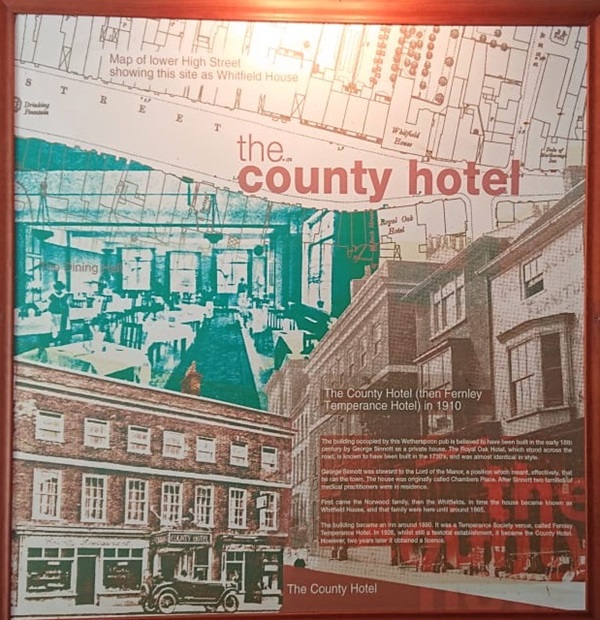
The text reads: The building occupied by this Wetherspoon pub is believed to have been built in the early 18th century by George Sinnott as a private house. The Royal Oak Hotel, which stood across the road, is known to have been built in the 1730s, and was almost identical in style.
George Sinnott was steward to the Lord of the Manor, apposition which meant, effectively, that he ran the own. He house was originally called Chambers Place. After Sinnott two families of medical practitioners were in residence.
First came the Norwood family, then the Whitfield. In time house became known as Whitfield House, and that family were here until around 1865.
The building became an inn around 1890. It was a Temperance Society venue, called Fernley Temperance Hotel. In 1926, whilst still a teetotal establishment, it became the County Hotel. However, two years later it obtained a license.
Prints and text about the Locomotive Factory.
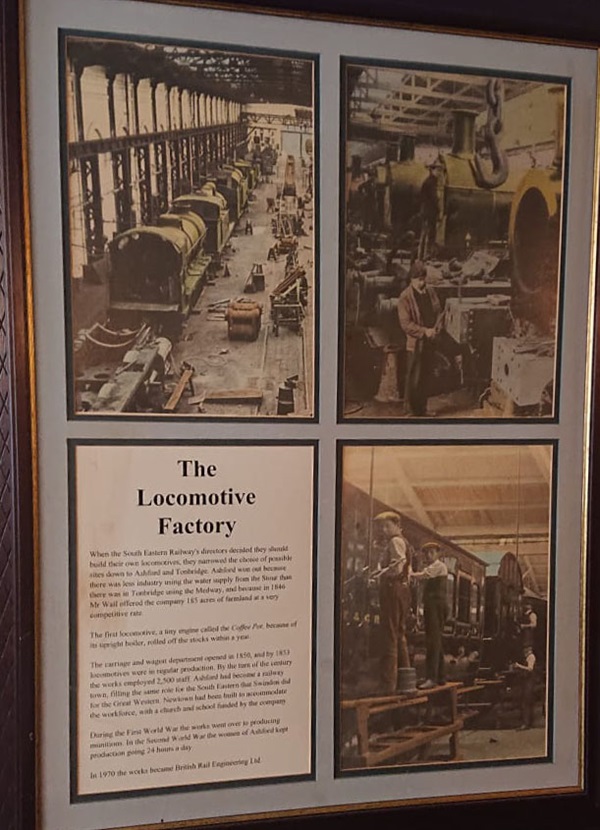
The text reads: When the South Eastern Railway’s directors decided they should build their own locomotives, they narrowed the choice of possible sites down to Ashford and Tonbridge. Ashford won out because there was less industry using the water supply from the Stour than here was in Tonbridge using the Medway, and because in 1846 Mr Wall offered the company 185 acres of farmland at a very competitive rate.
The first locomotive, a tiny engine called the Coffee Pot, because of its upright boiler, rolled off the stocks within a year.
The carriage and wagon department opened in 1850, and by 1853 locomotives were in regular production. By the turn of the century the works employed 2,500 staff. Ashford had become a railway town, filling the same role for the South Eastern that Swindon did for the Great Western. Newtown had been built to accommodate the workforce, with a church and school funded by the company.
During the First World War the works went over to producing munitions. In the Second World War the women of Ashford kept production going 24 hours a day.
In 1970 the works became British Rail Engineering Ltd.
A print and text about Ashford Fire Brigade.
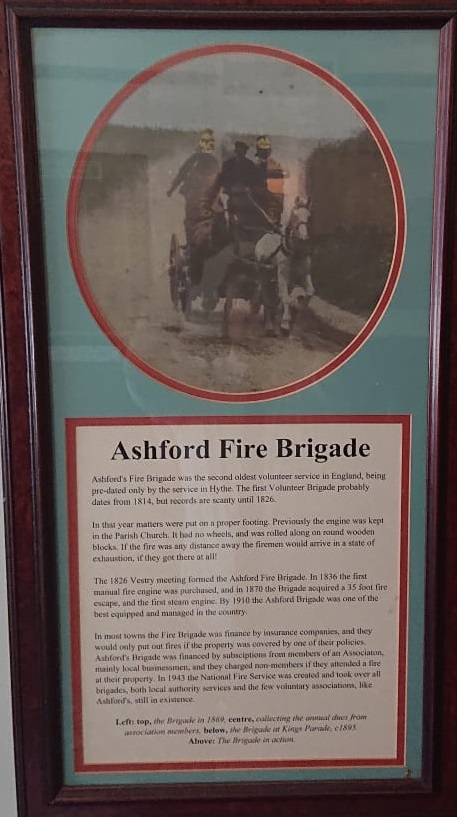
The text reads: Ashford’s Fire Brigade was the second oldest volunteer service in England, being pre-dated only by the service in Hythe. The first Volunteer Brigade probably dates from 1814, but records are scanty until 1826.
In that year matters were put on a proper footing. Previously the engine was kept in the Parish Church. It had no wheels, and was rolled along on round wooden blocks. If the fire was any distance away the fireman would arrive in a state of exhaustion, if they got there at all!
The 1826 Vestry meeting formed the Ashford Fire Brigade. In 1836 the first manual fire engine was purchased, and in 1870 the Brigade acquired a 35-foot fire escape, and the first steam engine. By 1910 Ashford Brigade was one of the best equipped and managed in the country.
In most towns the Fire Brigade was finance by insurance companies, and they would only put out fires, if the property was covered by one of their policies.
Ashford’s Brigade was financed by subscriptions from members of an Association mainly local businessmen, and hey charged non-members if they attended a fire at their property. In 1943 the National Fire Service was created and took over all brigade, both local authority services and the few voluntary associations, like Ashford’s, still in existence.
Left: top, the Brigade in 1869, centre, collecting the annual dues from association members, below, the Brigade at Kings Parade, 1895
Above: The Brigade in action.
An illustration of The College House.
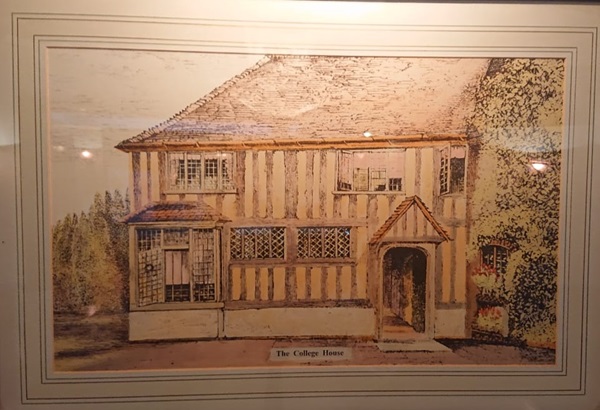
A print of lower high street, 1920.
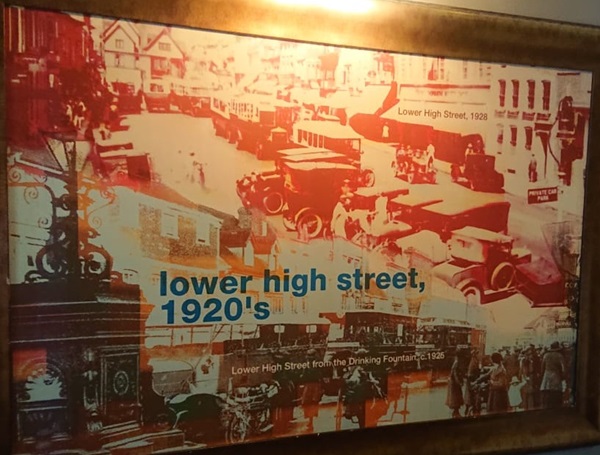
A print of Ashford from the river, 1840 and Market Day, 1850 – the scene from just outside this site.
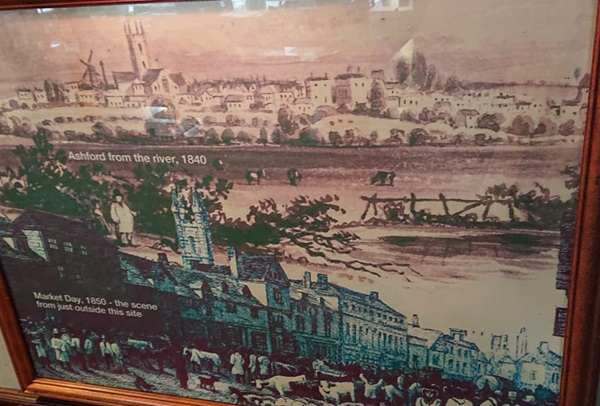
External photograph of the building – main entrance.
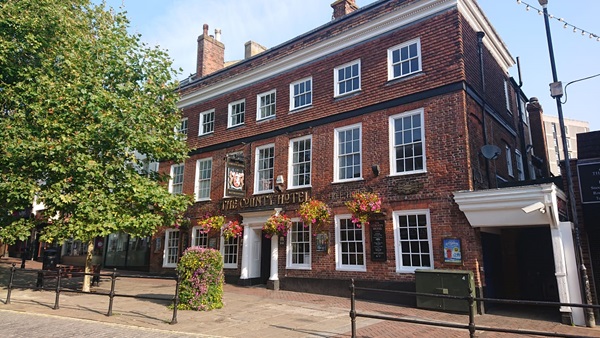
If you have information on the history of this pub, then we’d like you to share it with us. Please e-mail all information to: pubhistories@jdwetherspoon.co.uk